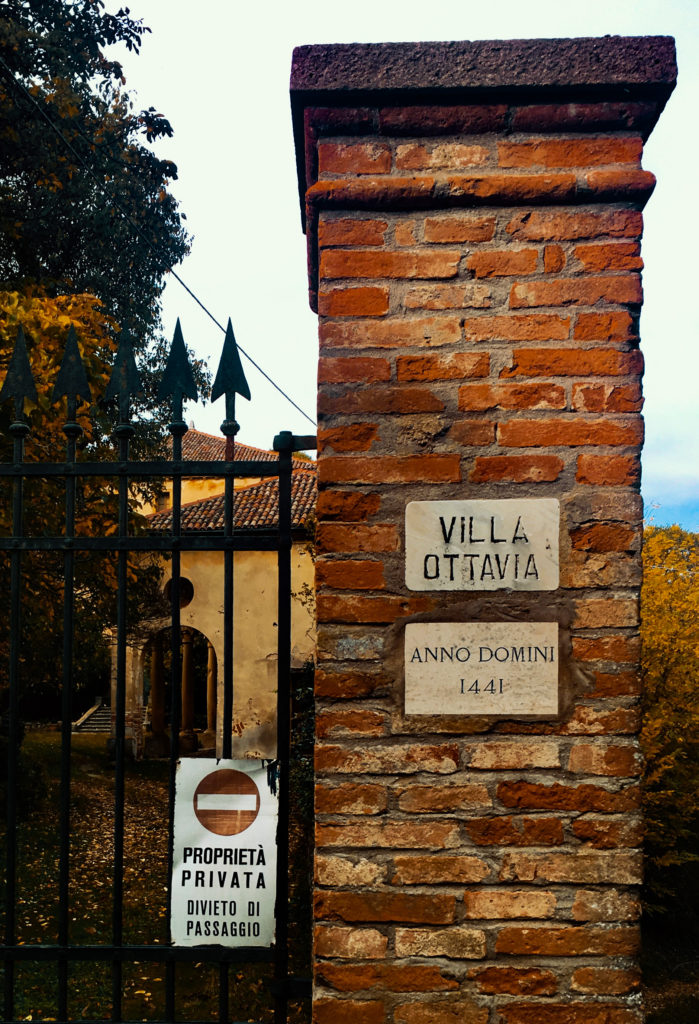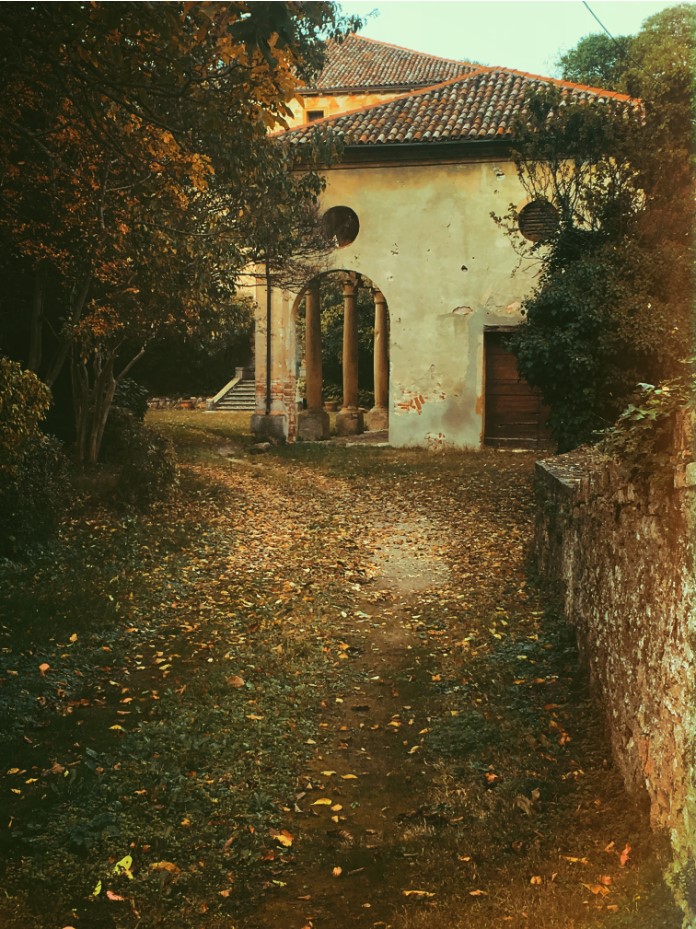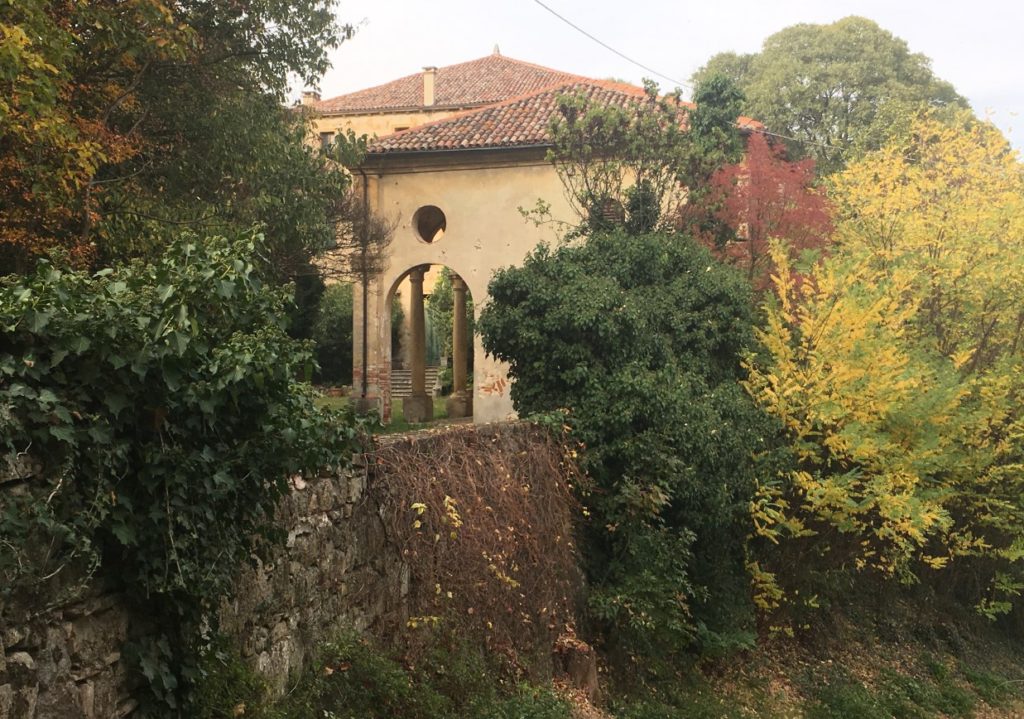Undiscovered beauties in the Euganean Hills
With its neo-Gothic style and the large romantic park it represents the last testimony of the civilization of the Venetian villa.
Villa Draghi stands isolated on the slopes of Monte Alto, on a small knoll to the west of the town of Montegrotto. The building, as we see it today, is an elegant building built between 1848 and 1850 by Pietro Scapin. In its place in the 1600s, there was the holiday home of the Venetian Alvise Lucadello, a wealthy accountant serving the government of the Serenissima. Later it passed property to the Donati family, the seventeenth-century building was then purchased by Scapin, who found the villa in a state of serious decay and decided to demolish it and rebuild it. The new building has largely been preserved and for over a century has no longer been known by the name of the ancient owner, but is called Villa Draghi, with reference to the family that owned it from 1874 to 1965.
Villa Draghi stands isolated on the slopes of Monte Alto, on a small knoll to the west of the town of Montegrotto. The building, as we see it today, is an elegant building built between 1848 and 1850 by Pietro Scapin. In its place in the 1600s, there was the holiday home of the Venetian Alvise Lucadello, a wealthy accountant serving the government of the Serenissima. Later it passed property to the Donati family, the seventeenth-century building was then purchased by Scapin, who found the villa in a state of serious decay and decided to demolish it and rebuild it. The new building has largely been preserved and for over a century has no longer been known by the name of the ancient owner, but is called Villa Draghi, with reference to the family that owned it from 1874 to 1965.
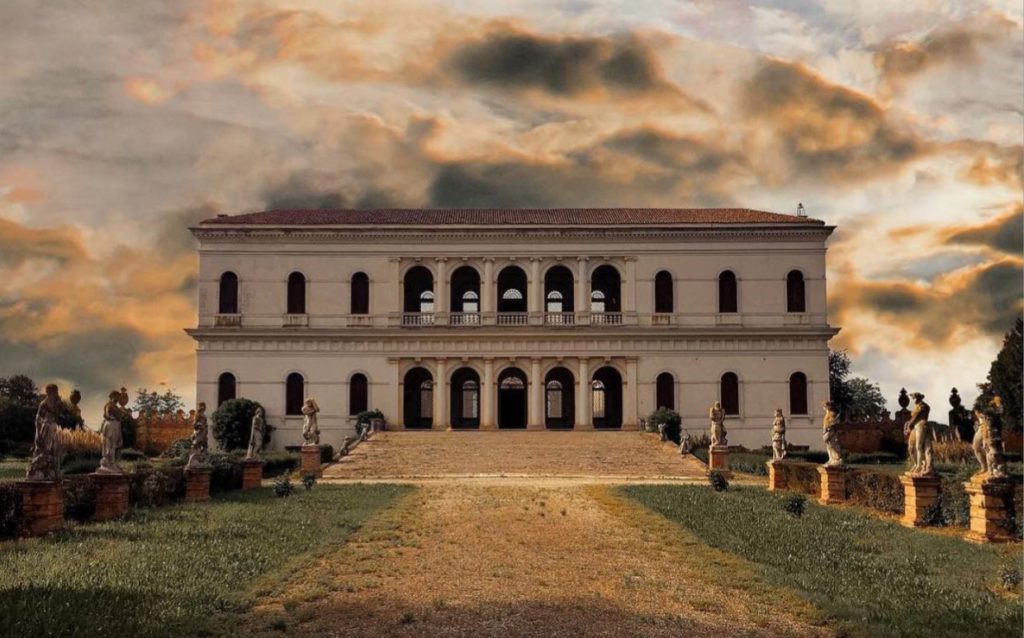
The entire property was acquired in 1972 by the Municipality of Montegrotto Terme, which recently restored the property, setting up the International Museum of Glass of Art and Baths in the rustic annexes of the villa, in which objects of great artistic value made by the most famous Murano glassmakers such as Venini, Granieri and Del Negro. A section of the museum houses the archaeological finds from the Roman era found in the spa area.
Villa Draghi is a square-plan building that is spread over two floors and has a neo-Gothic style architecture whose most distinctive feature is the elegant dovetail battlements on the top, a decorative element that is inspired by the famous Palazzo Ducale di Venice and that we find in other properties on the Euganean Hills, for example in the nearby Villa Zadra in Torreglia and Villa Selvatico in Battaglia Terme. The interior of Villa Draghi is bare, hardly any trace remains of the furniture and the ancient decoration, which must have been very sumptuous and rich. The last private owners, due to a difficult financial situation and testamentary disputes, have alienated all the furniture and sold any decorative element that can be removed from the villa. Then followed a long period of abandonment before the acquisition by the municipal administration, which in turn continued over time the execution of the restoration works, which have just ended.
Villa Draghi is a square-plan building that is spread over two floors and has a neo-Gothic style architecture whose most distinctive feature is the elegant dovetail battlements on the top, a decorative element that is inspired by the famous Palazzo Ducale di Venice and that we find in other properties on the Euganean Hills, for example in the nearby Villa Zadra in Torreglia and Villa Selvatico in Battaglia Terme. The interior of Villa Draghi is bare, hardly any trace remains of the furniture and the ancient decoration, which must have been very sumptuous and rich. The last private owners, due to a difficult financial situation and testamentary disputes, have alienated all the furniture and sold any decorative element that can be removed from the villa. Then followed a long period of abandonment before the acquisition by the municipal administration, which in turn continued over time the execution of the restoration works, which have just ended.
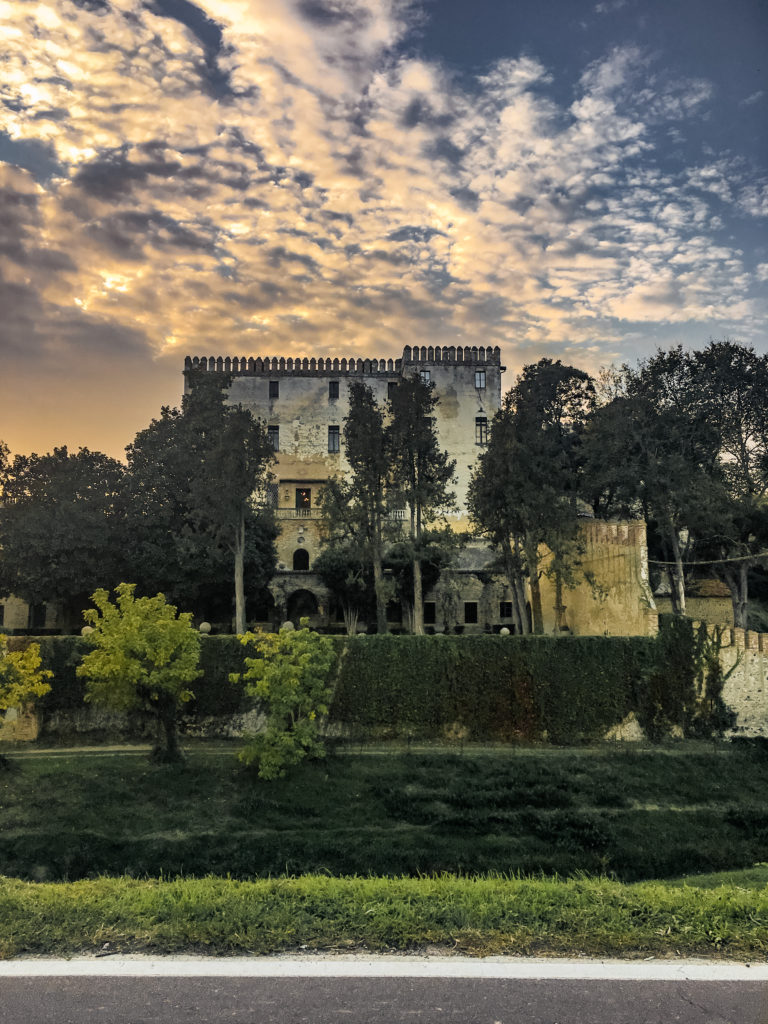
Today the halls of Villa Draghi are used for conferences and cultural events, but its intended use is still under discussion to find a greater value. The building, undoubtedly in a privileged position, has a magnificent terrace and a square from which you can enjoy a magnificent view of the spa town and its surroundings. The property also includes a large park of about 30 hectares and part of the forest that covers the hill above, from which some hiking trails of considerable naturalistic and landscape interest start.
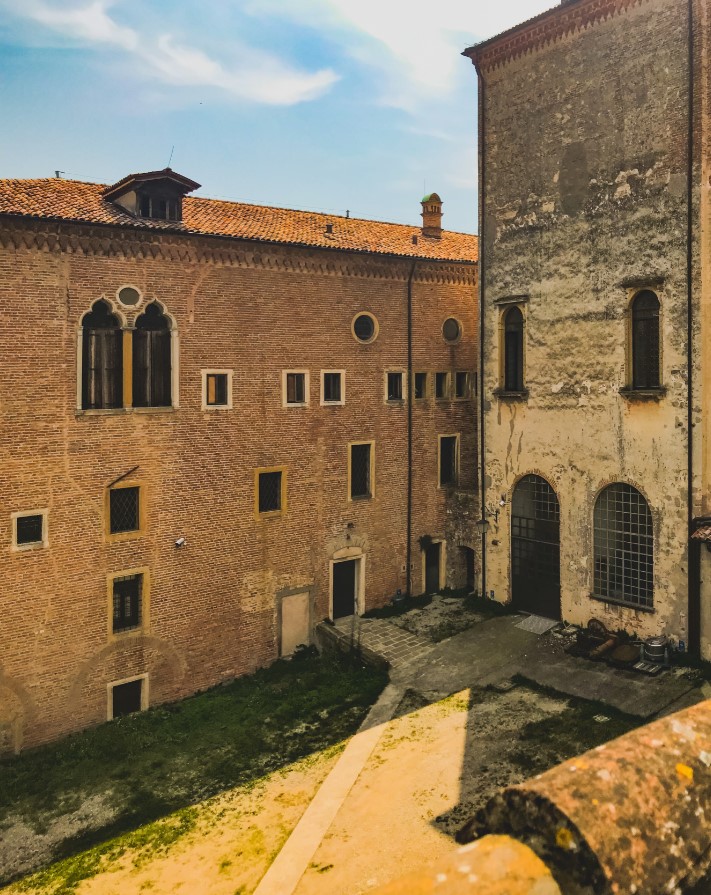
The Catajo Castle was built between 1570 and 1573, at the foot of the Montenuovo, at the behest of the leader of the Republic of Venice Pio Enea I degli Obizzi, belonging to a family originally from Burgundy, and based on a project by the architect Andrea da Valle .
The building, conceived as a private residence by the mother of Pius Aeneas, took on the imposing appearance of a fortress following the expansion commissioned by his son, the leader. During the 19th century, the Castle was inherited first to the Este, dukes of Modena, then to the Habsburgs, who transferred the highly prized collections of weapons and archaeological finds to Vienna, and finally became the property of the Dalla Francesca family in 1928.
The building is majestic, with a long driveway leading to the Cortile dei Giganti. This space was used by the Obizzi family for theatrical performances, tournaments and naumachias (re-enactments of naval battles), since the lower part of the courtyard could be filled with water. Among the different fountains of the villa, the most spectacular is the Elephant Fountain, located inside a cave carved into the rock embellished by the sculpture depicting the animal, an emblematic work of the exotic tastes of the ancient owners. A staircase, built so that it can also be climbed on horseback, gives access to the main floor and the reception rooms, where you can admire the family tree of the Obizzi family, frescoed on one wall.
The building is majestic, with a long driveway leading to the Cortile dei Giganti. This space was used by the Obizzi family for theatrical performances, tournaments and naumachias (re-enactments of naval battles), since the lower part of the courtyard could be filled with water. Among the different fountains of the villa, the most spectacular is the Elephant Fountain, located inside a cave carved into the rock embellished by the sculpture depicting the animal, an emblematic work of the exotic tastes of the ancient owners. A staircase, built so that it can also be climbed on horseback, gives access to the main floor and the reception rooms, where you can admire the family tree of the Obizzi family, frescoed on one wall.
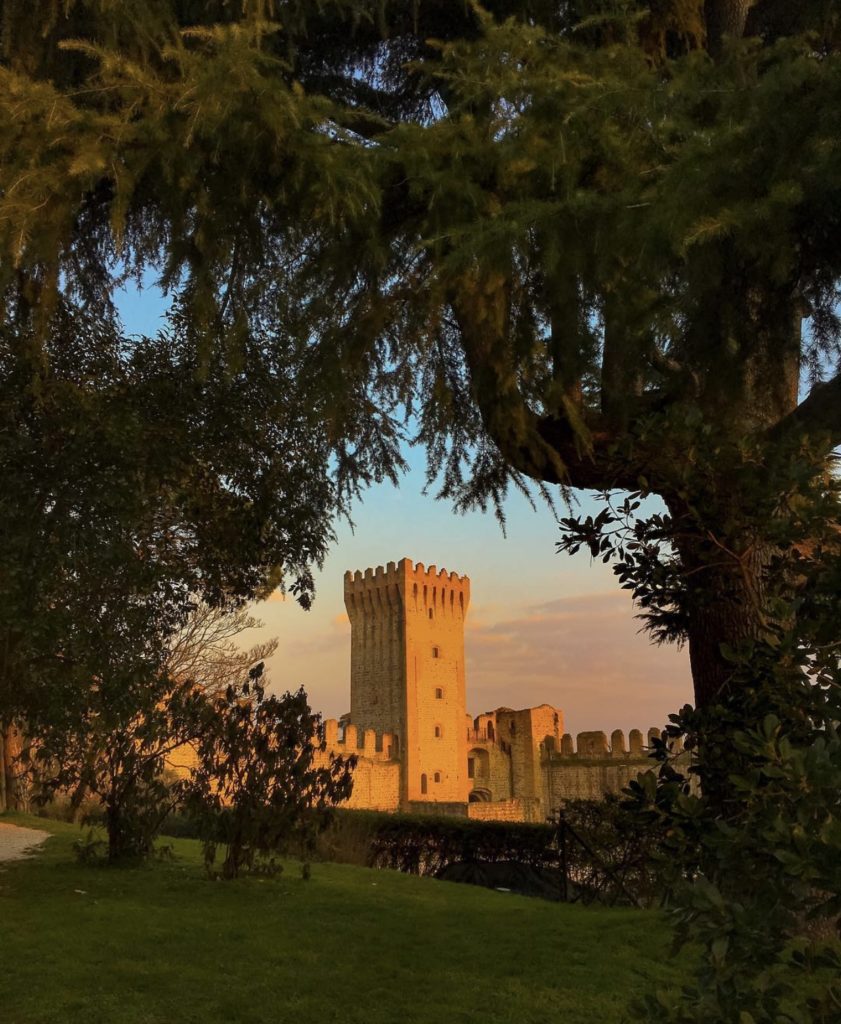
The Castle includes 350 rooms, some of which host frescoes by Giambattista Zelotti, a 16th century Venetian painter and pupil of Paolo Veronese, in which the events of the most famous members of the family are celebrated, leaders in the service of various Italian states, from Lucca to the Papal State, to the Serenissima.
From the large panoramic terrace the visitor can admire the vast gardens to the south, set up in the 1600s by Pius Enea II, characterized by two magnolias dating back to the 18th century and a gigantic American sequoia, as well as fish ponds, pergolas and boxwood labyrinths.
The curious name "Catajo" does not refer to the Catai told by Marco Polo, as someone imaginatively hypothesized in the past, but most likely derives from the distortion of the toponym Ca 'del Taglio (in the Venetian dialect taio), which indicated an excavation in the rock of the upstream aimed at the outflow of water.
From the large panoramic terrace the visitor can admire the vast gardens to the south, set up in the 1600s by Pius Enea II, characterized by two magnolias dating back to the 18th century and a gigantic American sequoia, as well as fish ponds, pergolas and boxwood labyrinths.
The curious name "Catajo" does not refer to the Catai told by Marco Polo, as someone imaginatively hypothesized in the past, but most likely derives from the distortion of the toponym Ca 'del Taglio (in the Venetian dialect taio), which indicated an excavation in the rock of the upstream aimed at the outflow of water.
